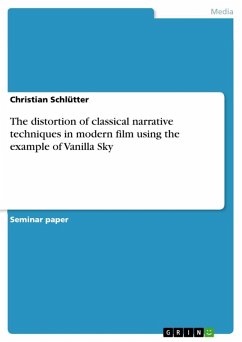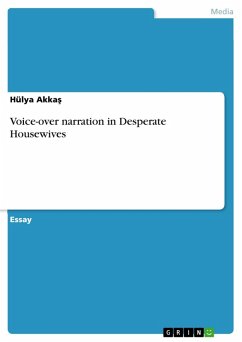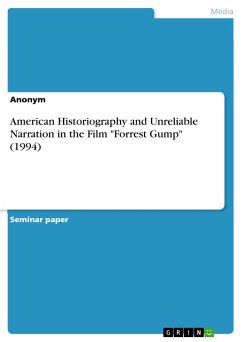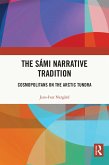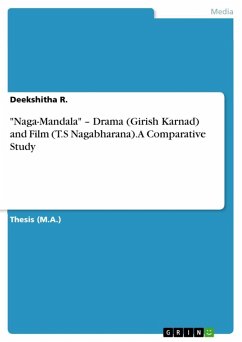Seminar paper from the year 2005 in the subject Communications - Movies and Television, grade: 1,3, University of Siegen (Forschungskolleg 615), course: Narration and Film, language: English, abstract: For a long time, most Hollywood directors stuck to a certain kind of narrative strategies to convey their view of the world to the recipient. Movie-conventions were therefore set from the beginning of profitable movie making and were fastened by the rise of big movie studios. In recent modern movies however, some directors have laid extreme interest on not sticking to the conventions and established a kind of non-narrative technique. As a result some of the most astonishing movies of the 90ies and the new millennium were created. The success of some of these movies can be explained by two facts. First of all, the abolishing of movie conventions resulted in the filmic reproduction of stories that had before been said to be unfit for filmic expression. Secondly the movies created drew their fascination from a non-understanding. With no classical movie conventions aligned, these movies seemed disturbing and frightening but it is also this disturbance that mesmerizes the viewer. In this essay I will try to outline in which way narrative conventions are abolished in modern productions and what effect this has on the spectator. To reduce the amount of information and to exemplify certain points I will stick to Cameron Crowe's movie Vanilla Sky (2001) which is based on the motion picture Arbre los Ojos (1997) by Alejandro Amenabar. The choice is justified by a rather confusing structure of the film which corresponds perfectly to the new way of moviemaking and also by the roots of the motion picture in an Off-Hollywood production area. These roots show that, although many non-classical movies have earned a lot of reputation, most moviemakers stick to conventions and that inventions are still entrenched in alternative cinema.
Dieser Download kann aus rechtlichen Gründen nur mit Rechnungsadresse in A, B, BG, CY, CZ, D, DK, EW, E, FIN, F, GR, HR, H, IRL, I, LT, L, LR, M, NL, PL, P, R, S, SLO, SK ausgeliefert werden.
Hinweis: Dieser Artikel kann nur an eine deutsche Lieferadresse ausgeliefert werden.

